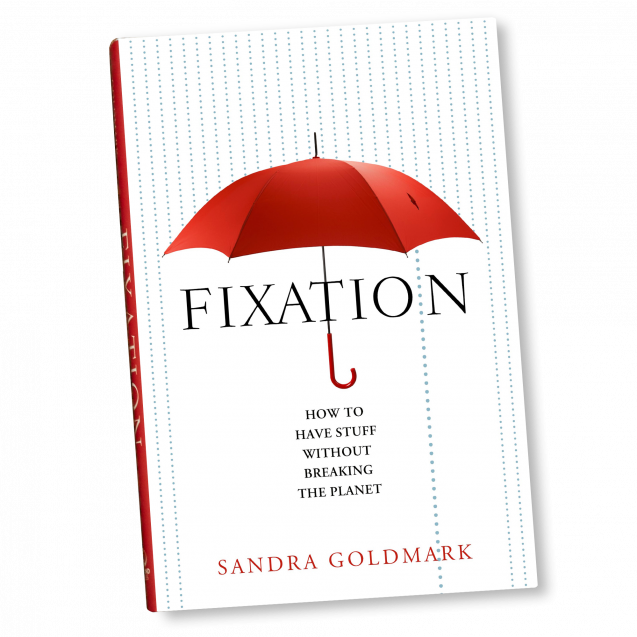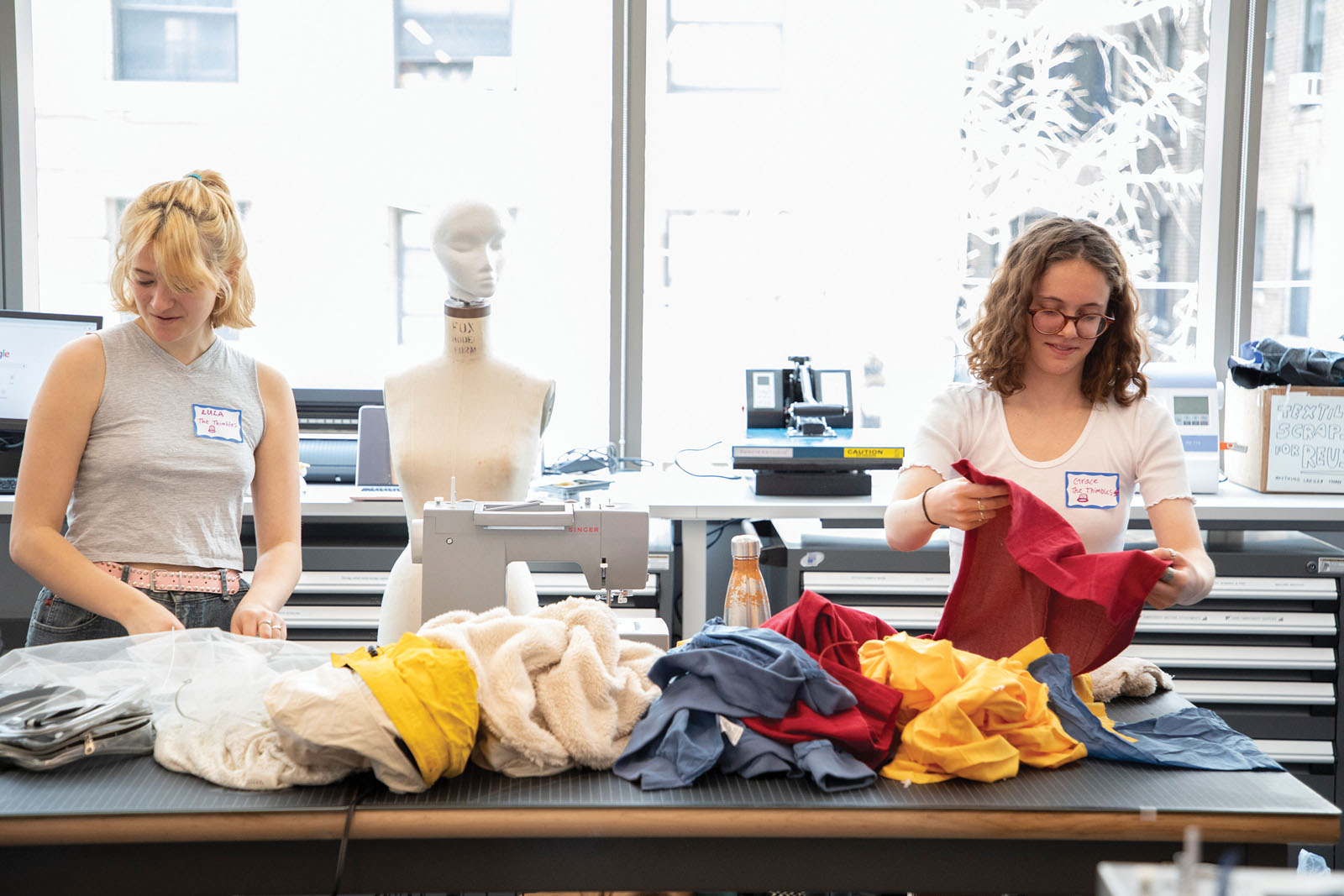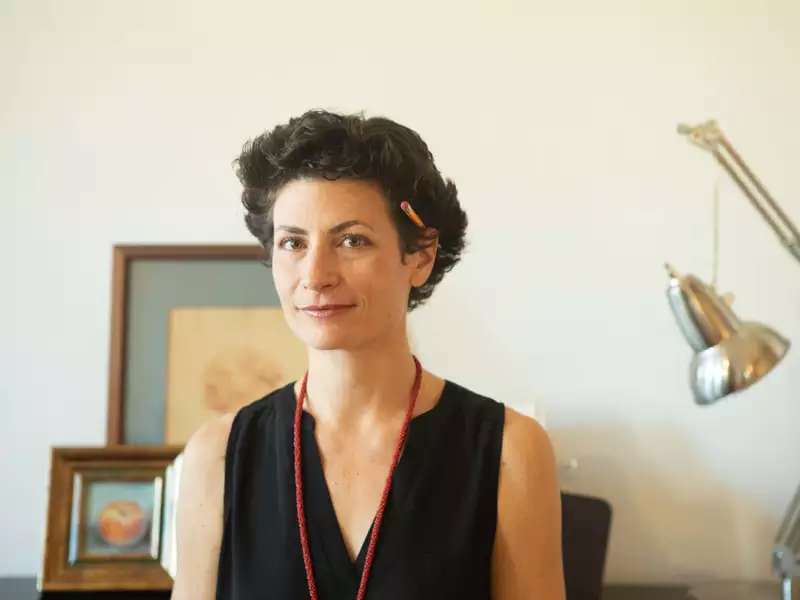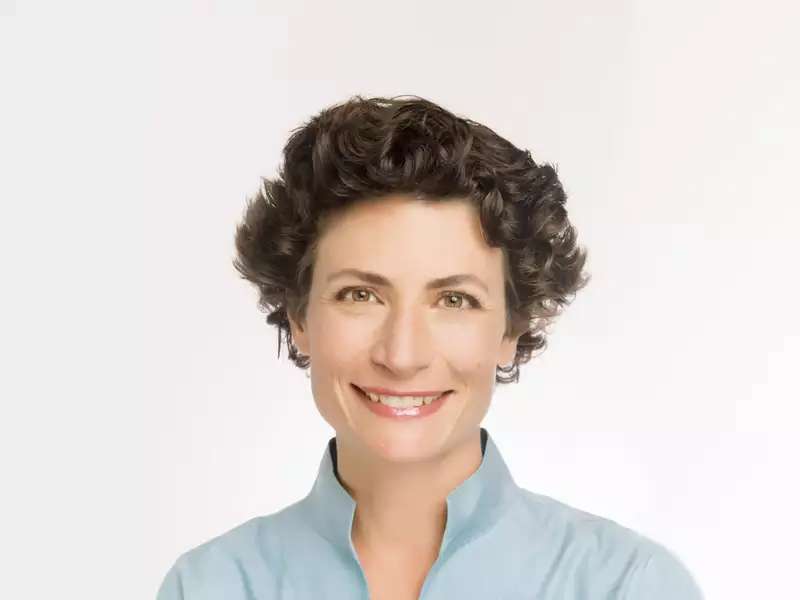On Tuesday, September 20, circularity will take the spotlight at Barnard as big names in city government and policy and environmental experts come together to explore, investigate, and underscore the value of rethinking consumption in the symposium Leveraging Circularity: Science, Business, and Community. The event is part of NYC Climate Week 2022, the biggest global climate event of its kind.
Sandra Goldmark is used to setting stages for action in her work as associate professor of professional practice in theatre. And as the College’s Director of Campus Sustainability and Climate Action, Goldmark has been running the show when it comes to working across disciplines and sectors to promote the idea of creating circular systems as a way to reduce waste and greenhouse gas emissions.
Goldmark describes her approach in detail in her 2020 book, Fixation: How to Have Stuff Without Breaking the Planet. She prescribes a series of fundamental changes to how society approaches “stuff,” advocating a shift to a circular economy. This includes the full cycle of production, consumption, and disposal of everything from industrial manufacturing to decisions about what we buy and refrain from buying — she mostly wants us to repair our materials goods rather than chucking them into the planet’s overflowing landfills, which is key to practicing circularity.
In this Q&A, Goldmark explains what’s at stake and highlights how the upcoming circularity symposium will illuminate the power of circularity.
What is circularity and why does it matter?
Circularity provides a framework for thinking about consumption. Circularity means shifting from what we call a linear system to a circular one. In a linear one, we extract materials from the earth, we make objects, we use them, and then basically, we throw them away. In a circular system, we extract raw materials and make objects, but we use them for much longer. We repair them. When we can’t use them anymore, we break them down into component parts and remanufacture or remake them into new objects.
Circularity matters because it is powerful and can be used at every scale. It’s a way to think about [reducing] waste, and it’s a way to think about the front end, what we make and buy. With circular consumption, every resource we extract from the earth is incredibly valuable and stays in use for a long, long time.
Is the idea catching on in a significant way?
We’ve seen over the past few years a steady increase in people’s awareness and active engagement with climate issues. People see extreme weather events unfolding, far and near, as people grow increasingly frustrated with the lack of action. That frustration leads them to ask, how will we do this, reduce greenhouse gasses and stave off the worst consequences of global warming? Circularity is a solution — one of many needed to address climate change — and it’s one that works at every scale. The World Resources Institute has estimated that doubling the global circularity level by 2030 can reduce greenhouse gas emissions by about 20%.
How will Barnard’s event during NYC Climate Week 2022 help get more people, communities, and businesses to incorporate the principles of circularity?
The event’s goal is to raise awareness about the power of this tool, circularity. This is available to us right now, today, from how we design products to what we choose to buy to whether we compost. It’s something that actually already exists in our communities and in our economy. We don’t have to invent it from scratch, and it doesn’t always require a lot of new technology. It’s something we can really leverage right now and lean into to address a lot of problems. We can use it as a waste reduction tool; we can use it as an emissions reduction tool. Circularity can even benefit biodiversity — because you’re using fewer raw materials, you’re destroying fewer habitats. It’s a really powerful tool that I think people don’t always realize is there and available to us.
—MARIE DeNOIA ARONSOHN



